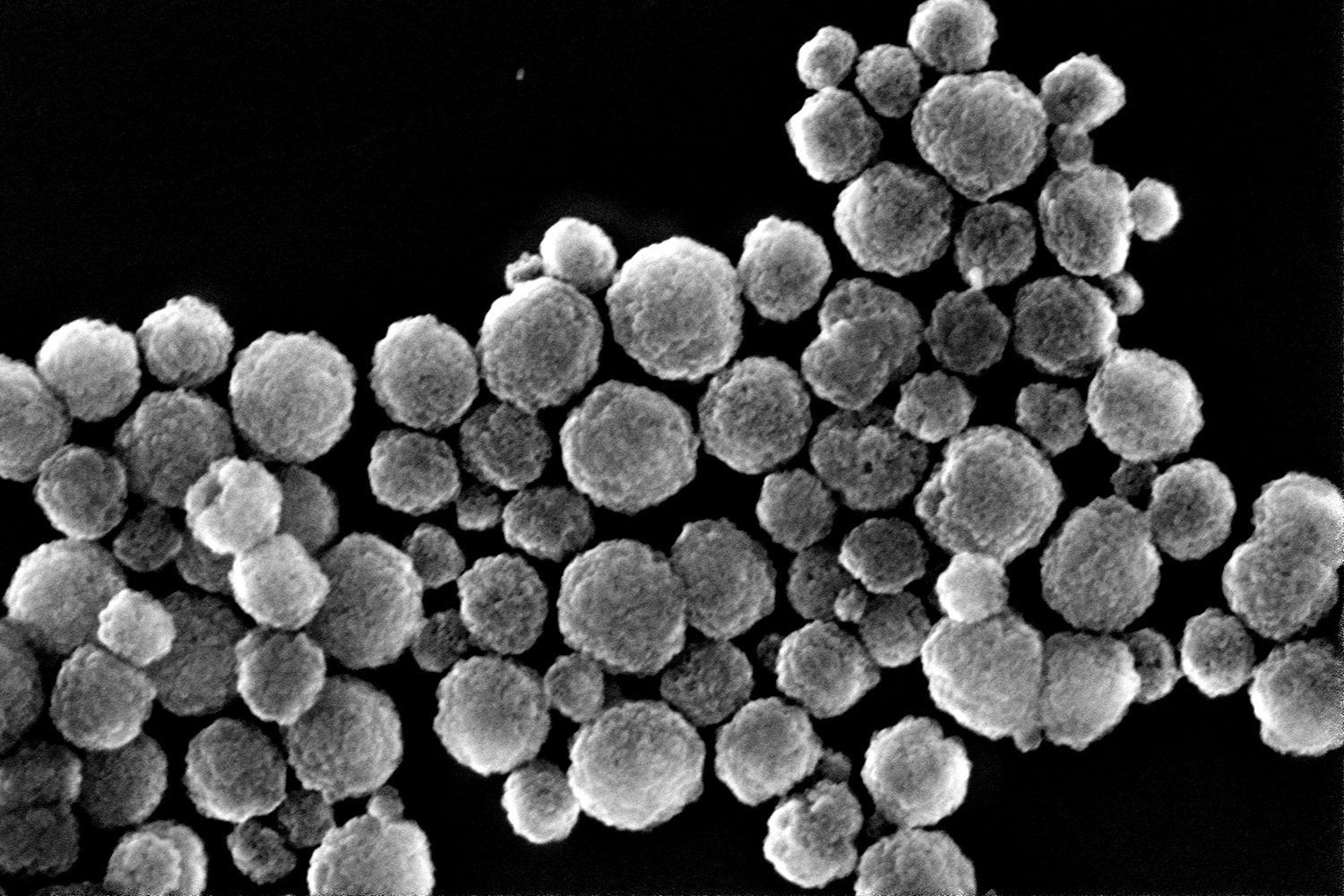Picture of the month: Rare earth-doped nanoparticles Developing biomarkers with versatile properties at the Laboratory for Emerging Nanometrology (LENA)
Biomarkers are needed to monitor processes in biological systems such as the human body. They can, for example, help to detect diseases and their progression at an early stage and to monitor the effectiveness of a certain treatment

Image of the NaGdF4 particles doped by Eu3+ ions made with a scanning electron microscope. The examined particles show a rough surface, indicating that they are aggregates of primary nanoparticles. Picture credits: Bogdan Semenenko/iPAT
Commonly, gold nanoparticles or organic dye molecules are used as biomarkers. However, their emission wavelengths cannot easily be tuned to mark different structures with distinct colours.
This problem can be solved by utilizing nanoparticles doped with lanthanides, also known as rare earth elements. A feature of these nanoparticles are their characteristic emission spectra, which can be manipulated by the particular lanthanide used for doping.
Synthesis via eco-friendly methods
At the Laboratory for Emerging Nanometrology (LENA), biocompatible NaGdF4 particles that contain small amounts of europium and thulium as doping elements are synthesised from the corresponding metal chlorides by a water-based synthesis. Using water as reaction medium provides the advantage of being more eco-friendly compared to the typically used organic synthesis. Additionally, the resulting nanoparticles are hydrophilic and thus are directly compatible with aqueous biological media. At LENA, a method to control the particle diameters in this advantageous aqueous synthesis has been developed. This involves adjusting the amount of precursors, which consequently led to diameters of 80 to 180 nm.
The crucial requirement for biomarkers is that they have sufficient luminescence intensity so that they can be scanned along with biological material. Hence, the prepared europium-doped NaGdF4 particles are inspected using various optical methods. To increase the intensity of the light emission, a post-treatment was developed that enhances the crystallinity of the particles. By replacing europium with other lanthanides (like thulium or ytterbium), the emission wavelength can be changed. This allows simultaneous labelling of several biological structures.
This project is based on a collaboration between the research groups of Prof. Dr. Georg Garnweitner, Institute for Particle Technology, and Prof. Dr. Tobias Voss, Institute of Semiconductor Technology, at the Laboratory for Emerging Nanometrology.
